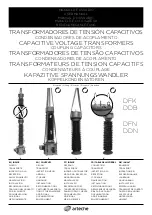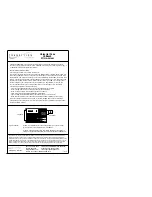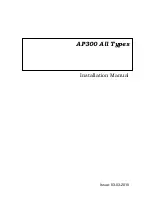
Series PC Manual V 1.0 - Rev. 3
– 03/01/01
DS Europe
18
Incorrect connections can be easily found out by DS Europe and can cause serious
damage to the transducer. The warranty does not cover this kind of damage.
10.1. CABLE OUTPUT
Table 1 indicate the color codes of conductors for the output cable.
CONDUCTOR COLOR
ELECTRICAL CONNECTION
RED
+ POWER SUPPLY
BLACK
- POWER SUPPLY
WHITE
+ ANALOG OUTPUT 1 (A/D1)
GREEN
+ ANALOG OUTPUT 2 (A/D2)
YELLOW
- ANALOG OUTPUT
BLUE
DATA – (RS-485)
BROWN
DATA + (RS-485)
Table 1: Connection to transducer cable output
10.2. CONNECTOR OUTPUT
Table 2 indicates the code for contacts (= PIN) of output connector.
CONTACT (= PIN)
OF CONNECTOR
ELECTRIC CONNECTION
1
+ POWER SUPPLY
2
- POWER SUPPLY
3
+ ANALOG OUTPUT 1 (A/D1)
4
+ ANALOG OUTPUT 2 (A/D2)
5
- ANALOG OUTPUT
6 DATA–
(RS-485)
7
DATA + (RS-485)
Table 2: Connection to transducer connector
10.3. POWER SUPPLY CONNECTION
Figure 6
shows how to connect the transducer to a stabilized and filtered power supply,
which is to supply a voltage of 24 VDC and a current of at least 100 mA (better to choose
power supply with 0,5 A min. current considering the operating pulse rate of the transducer
).
When choosing power supply it is advisable to use
linear power supply
rather than
switching type, which, if not of the best quality, has a great high frequency ripple which can
noise the output or make It unstable.
Connect the RED wire ( PIN1 ) to the positive terminal ( + ) of power supply and the
BLACK wire ( PIN2 ) to the negative terminal ( - ).
WARNING : The common of the power supply ( “ - “ power supply ) must be grounded in
order to avoid damages due to mains fluctuations.
















































